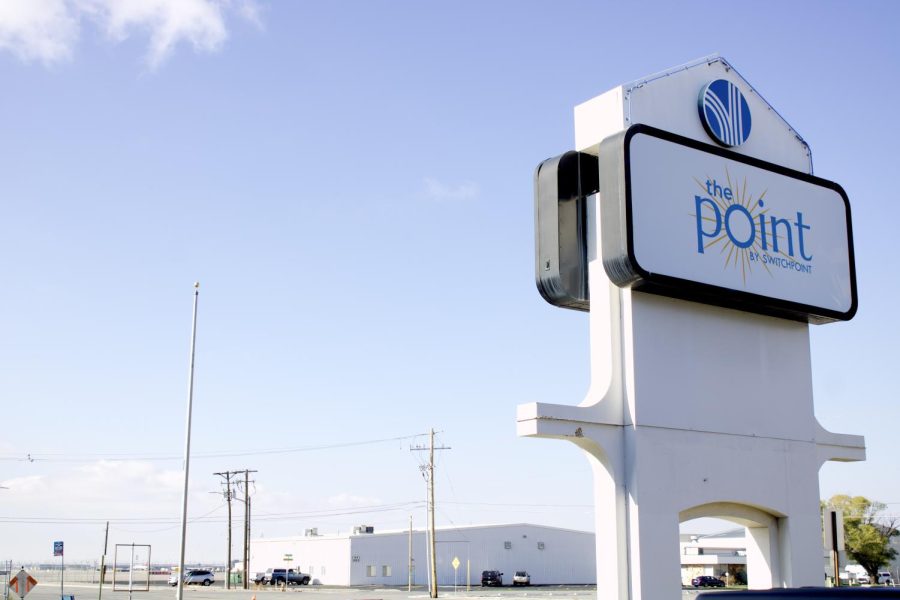Langley: Bring More Socialized Housing to Utah
The Point Housing Facility on Nov. 18, 2022 in Salt Lake City. (Photo by Sophie Felici | The Daily Utah Chronicle)
February 14, 2023
The American Dream includes owning a home of your own. But for some, the feasibility of securing white-picket fences is just that: a dream. With rising housing prices nationwide, owning a home drifts out of reach for many Americans. Even for those who rent, housing is extraordinarily expensive.
But a solution to this problem has been perfected and practiced for decades in other nations: social housing. A system that, at its foundation, de-commodifies quality housing and establishes it as a human right. The United States and Salt Lake City need to consider or even move toward implementing socialized housing.
How Does Socialized Housing Work?
In America today, the average person may find social housing a challenging concept to pin down. Some think of the racially segregated, poorly-run megacomplexes of the 20th century and stop their consideration then and there. However, the public housing endeavors made by the U.S. government in the past are far from what many enjoy in other nations today.
For example, social housing has been the norm in Austria for nearly 100 years. After the end of World War I, many lost their homes due to bombings and economic failure. A program, Red Vienna, turned their situation around by creating well-maintained mixed-income housing. Citizens of all classes were housed together in modern buildings near transit, schools and other facilities. The only catch is that wealthier tenants pay market rent, which helps pay off their lower-income neighbors’ subsidized rent. Despite the usage of the term “lower-income,” Politico reports over 75% of the population qualifies for this type of housing. Overall, the Austrian social housing system has been successful for years, and low and upper-class tenants alike laud it. Around 60% of Vienna’s citizens live in these government-sponsored developments.
There are differences between Austria’s system and Section-8 housing, an American affordable housing program. While the two programs have similar concepts, Section-8 housing makes the landlord a significant part of the dynamic. This gives the tenant and landlord extra cash and leaves the administrative process to the landlord. Social housing would work a bit differently. It replaces the landlord with non-profit housing cooperatives that work closely under government supervision to ensure adequate service and fair prices at around 25% of one’s monthly salary, according to The American Prospect. Compared to Utah’s 40% maximum, the Austrian system is much more comfortable.
The Austrian system is not the only example of social housing’s success. Countries like Finland, Denmark, Spain and the Netherlands operate similar to Austria and have experienced success. Some East-Asian countries have seen success with social housing as well. The island nation of Singapore, in particular, has had such success that over 80% of citizens today live in government-constructed apartments, Bloomberg reports.
Implementing Social Housing in Salt Lake
Socialized housing may seem impossible in the U.S. and especially in a red state like Utah, but there has been some recent progress. The Point, up until recently called the Airport Inn, was converted into an extended-stay shelter for those experiencing homelessness. The subsidized rent, only $450 a month, gives those making a limited amount on social security or minimum wage a place to live. The project represents a massive step in the right direction and shows skeptics that perhaps, with effort, socialized housing could be a reality.
Alongside this project, Utah has spent nearly $55 million on similar housing projects in the Wasatch front for those experiencing homelessness and the deeply impoverished, according to the Salt Lake Tribune. While this has a significant impact, this cannot be the end of this style of development in our state. According to Salt Lake City Housing and Neighborhood Development, nearly a quarter of residents struggle with rising rents and stagnating salaries, and housing like this can only help people.
Salt Lake City is also one of the fastest-growing cities in America. If we want to provide our citizens with safe places not just to survive but to prosper, we need to use a system with proven efficacy.
As college students, we are no strangers to being burdened by rent. In Salt Lake City, the average rent is well over $1,000 a month and rising. Why, then, do we not push for this system of housing? No matter what side of the political spectrum we may fall, we need to consider this system for the sake of our livelihood. Unless our local government finds another polluting inland port or highway extension more critical to our lower-income citizens’ lives than housing, I advise they take action now.
A country with more empty properties than homeless individuals and where millions are burdened by rent is a country not for the people, but against them. It is our responsibility to implement socialized housing systems to ensure stability and safety in the present and future. As a country, we have made our mistakes with similar programs and allowed the bigoted and evil to ruin it, but that does not mean we can’t change.
Social housing is a force for good. Let us take a step in the right direction instead of panicking about the path of destruction we’re on.










Bob Flores • Feb 15, 2023 at 9:33 pm
Very informative article on a very interesting topic. Good work.
Bob Flores, Professor of Law (emeritus)